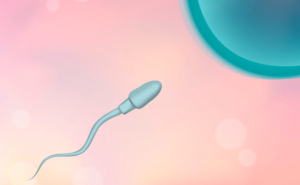Introduction
“What are the advantages of returning-home childbirth?”
“In most cases, how long do people stay when returning home?”
As the due date approaches, you may find yourself being asked at the obstetrician’s office, “Are you planning to have a returning-home childbirth?” This leads many to start contemplating the idea of returning-home childbirth. However, it’s common to feel uncertain about the benefits and the appropriate duration for the return.
So, in this instance, let’s take a closer look at the advantages and disadvantages of returning-home childbirth, as well as delve into common durations and schedules.
What is Returning Home for Childbirth?
Returning-home childbirth refers to going back to one’s parents’ home and giving birth at a nearby maternity hospital. The timing of when to return home varies from person to person.
Why Opt for Returning Home for Childbirth?
The purpose of having a returning-home childbirth is to be able to give birth with peace of mind at one’s parents’ home. Additionally, it allows for a better postpartum recovery, reduces household chores, and provides assistance with childcare, thereby alleviating the physical and mental burdens on the mother before and after childbirth.
Advantages and Disadvantages of Returning Home for Childbirth
The main advantage of returning-home childbirth is undoubtedly the reduction of physical and mental burden on the mother.
- Being able to approach childbirth in a relaxed environment at one’s parents’ home
- The reassuring presence of family with parenting experience nearby
- The ability to seek support in various aspects of daily life
- Assistance with childcare is available
On the other hand, disadvantages include living separately from the husband and not receiving the desired support as planned.
- Feeling anxious about potential changes in the marital relationship
- Limited time for the husband to interact with the baby, making it challenging for him to feel like a father
- Potential conflicts arising from differences in family and parenting approaches
- Financial concerns
- Finding life challenging upon returning home

When and How Long to Stay?
When to start and end a returning-home childbirth is a personal decision, as there is no specific predetermined duration. However, there is a common guideline regarding when to conclude the returning-home period.
A common practice is to consider the timing after the one-month postpartum checkup. Most people undergo this checkup at the hospital where they gave birth. Therefore, many tend to stay at their parents’ home until after this checkup. So, is there a general timeframe as an indicator of when to start returning home?
Early Pregnancy
Some individuals start preparing for returning-home childbirth as early as around 6 to 15 weeks of pregnancy when the heartbeat is confirmed. For those whose parents’ home is located far away, some may feel more at ease by returning home early.
For those experiencing severe morning sickness, returning home allows for support in daily life, making the situation more manageable.
NIPT (Non-Invasive Prenatal Testing) from Early Pregnancy
NIPT is a diagnostic test conducted to examine whether the baby has any chromosomal abnormalities. NIPT stands for Noninvasive Prenatal Genetic Testing.
This test involves a simple blood draw from the mother, allowing the examination of conditions such as Down syndrome (Trisomy 21) or Edwards syndrome (Trisomy 18). It can be performed soon after confirming pregnancy through ultrasound.
Can You Undergo NIPT While Returning Home?
ven if you have returned home, it is possible to undergo NIPT if there is a facility nearby offering the test. However, not all hospitals provide NIPT, so it’s advisable to check with the hospital where you plan to have your returning-home childbirth.
At Hiro Clinic NIPT, the test is available in various locations from Hokkaido to Kyushu. The examination is completed in one visit, and you can receive the results online after the test. Feel free to inquire about reservations and other details.
Mid-Pregnancy
The period from 14 weeks 0 days to 27 weeks 6 days is considered the mid-term of pregnancy. From around 16 weeks, it is commonly referred to as the stable period, a time when morning sickness tends to subside for most pregnant women. As the belly is not yet significantly large during this time, it is a period when one can move around comfortably, making it a suitable time for returning home.
Late Pregnancy
For those whose parents’ home is not at a considerable distance and for those who continue working until the last minute before maternity leave, returning home often occurs during the late pregnancy, specifically after 28 weeks.
However, it’s crucial to be cautious about returning home too late. Once you enter the 37th week of pregnancy, you enter the full-term period, and the baby can be born at any time. Since the expected due date is just an estimate, it is generally recommended to return home around 34 weeks of pregnancy when entering maternity leave.
Schedule for Returning Home for Childbirth
If you are considering returning-home childbirth, it’s advisable to be aware of the process in advance to avoid any last-minute rush or panic.
Preparations in Advance
Returning-home childbirth is not something that can be done suddenly without any preparation. Since advance preparation is necessary, it’s important to understand the process and take action promptly.
Researching Hospitals for Delivery
It is recommended to start looking for a hospital that will accept you early on. Popular hospitals can fill up quickly, and there is a possibility that you may not be able to give birth at your preferred location. You can check hospital websites on the internet or inquire by phone to find out if they can accommodate you. Additionally, be aware that some hospitals may not accept returning-home childbirth at all, so it’s essential to pay attention to this.
Booking Delivery in Advance
Once you have found a hospital that will accept returning-home childbirth, it’s a good idea to make a reservation as early as possible. Some individuals start making reservations as soon as the timing for confirming the heartbeat or determining the expected due date. Be aware that some hospitals may not allow reservations over the phone, and a preliminary visit may be required, so it’s important to be cautious.
Referral Letter
To undergo returning-home childbirth, it is necessary to obtain a referral letter from the initial hospital you visited to transfer to the destination hospital. Therefore, if you wish to return home, it’s advisable to inform your current attending physician at the hospital as early as possible about your intention.
Things to Bring for Returning Home for Childbirth
For returning-home childbirth, many items are necessary. Discuss with your family at the returning-home location to determine what to prepare yourself and make the necessary arrangements.
- Maternal and child health handbook
- Referral letter
- Health insurance card
- Personal seal (hanko)
- Clothing (underwear, maternity clothes, etc.)
- Toiletries
- Makeup items
- Nursing clothes, nursing bras
- Postpartum shorts
- Postpartum pads
- Change of clothes for hospital stay
- Breast pads
- Baby’s clothing
- Baby bath
- Baby bedding
- Formula milk
- Diapers
Some items may be provided by the hospital, and there are things you can prepare after returning home. Depending on the situation, checking what is necessary in advance can help avoid bringing unnecessary items.
Additionally, it’s okay to prepare formula milk and diapers after childbirth. Depending on the mother’s milk production, these items may not be needed right away, and the size of diapers can vary based on the baby’s weight. Be cautious not to prepare too early, as you might end up discarding unused items.
Considerations for Returning Home for Childbirth
As part of the pre-preparation, it’s essential to discuss with your parents or in-laws at the returning-home location to ensure they are willing to accommodate you. The accommodating side also needs to make preparations, such as securing a room and sleeping arrangements. Additionally, to avoid any financial issues later on, have a thorough discussion about the sharing of living expenses during the returning-home period.
Returning to a Distant Location
If you plan to fly during pregnancy, a medical certificate or consent form from a doctor may be required. Generally, there are no significant issues with flying before 28 weeks. For example, with ANA, if your expected delivery date is within 28 days from the date of boarding, a medical certificate issued within 7 days of the scheduled boarding date is required.

Postpartum Period for Returning Home for Childbirth
After returning home and successfully completing childbirth, there are several procedures that need to be done. Failing to complete these procedures could result in financial loss, so it’s essential to make sure to complete them.
Procedure for Subsidies
At the timing of receiving the maternal and child health handbook, the subsidy coupons issued are not usable at the returning-home childbirth location. Therefore, at the destination hospital, you may need to temporarily pay for everything out of pocket. To reclaim the amount paid out of pocket, it is necessary to go through the subsidy application process.
In the case of Katsushika Ward, Tokyo, you can receive money back by applying for the subsidy within one year after giving birth. However, unused subsidy coupons are required for the application, so be sure to keep them and not discard them.
Birth Registration
If you have returned home, the birth registration should be submitted to the city, ward, or town where the child was born, the registered domicile, or the location where the resident registration is held. The destination for birth registration remains largely unchanged if you do not return home. The birth registration must be submitted within 14 days from the date of birth, so many individuals often ask their husbands to handle this process.
Conclusion
There are no strict rules on when to start and end returning-home childbirth. It’s advisable to decide based on your own health, the readiness of the returning-home location, your husband’s preferences, and other factors, within a reasonable and feasible range.
However, various preparations are necessary for returning-home childbirth. Pregnancy can be physically demanding and tiring, so starting preparations early can provide peace of mind.
【References】
- My Navi Parenting – 【Midwife’s Explanation】When is the best time for returning-home childbirth? Timing and preparations for visiting family
- ANA – Customers During Pregnancy [Domestic Flights]
- Official Website of Katsushika-ku – Partial Subsidies for Returning-Home Childbirth and Maternity Health Examination Fees
Article Editorial Supervisor

岡 博史先生
【役職】
【資格】
【略歴】
【所属】
【SNS】
 中文
中文












